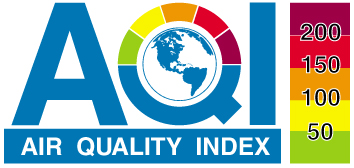Our daily air quality forecasting wrapped up Sept. 30, and we’re happy to report that, as we reflect on this season, ozone pollution levels in our region improved significantly compared to the prior year. While the potential for poor air quality conditions is higher during the summer when overall weather patterns, amount of sunshine and wind levels all play a significant role, this summer’s air quality was likely impacted by the fact there were fewer cars on the roads as COVID-19 kept many people working remotely and kept the auto emissions that can contribute to the formation of ozone pollution in check.
As a driving force in the fight for cleaner air in the St. Louis region, the Clean Air Partnership’s daily air quality forecasting takes place over the summer months and is based on the air quality index, utilizing a color-coded system designed to keep area residents informed about ozone pollution levels in the region and how those levels can affect their health. A look back over the past several months reveals that our air quality remained relatively healthy during the peak ozone season. From the beginning of May through the end of September, green was the dominant color with 95 days where the air quality was good, followed by 54 yellow or moderate air quality days. While we experienced 4 orange days where the conditions were unhealthy for sensitive populations, we actually matched last year’s number and had ZERO red days all summer long!
Even though this is positive news for the region, there is still much work to be done in the fight for cleaner air and it’s important the fight continue year-round. Fortunately, there are many voluntary measures we can take to help people all across the St. Louis metro area breathe easier. With the state and region gradually opening back up for business, traffic continues to ramp back up and so will the potential for increased emissions. Since those transportation-related emissions are one of the biggest contributors to air pollution, the choices people make on how to get around are especially crucial when it comes to the quality of our air.
With that in mind, actions like walking and biking instead of using a vehicle for short trips, combining errands into a single trip, not topping off your gas tank and avoiding vehicle idling are always great options for reducing the amount of ozone-forming emissions generated on any given day. Additionally, there are many other eco-friendly lifestyle changes unrelated to commuting that individuals and businesses can consider any time of year to positively impact air quality and improve lung health. These changes include efforts to conserve energy, recycle, reduce waste and reuse items.
You can continue to learn more about health effects of exposure to air pollution and actions you can take to reduce emissions by visiting www.cleanair-stlouis.com and the American Lung Association’s website, liking the Clean Air Partnership on Facebook or following @gatewaycleanair on Twitter for insightful tips and more.

